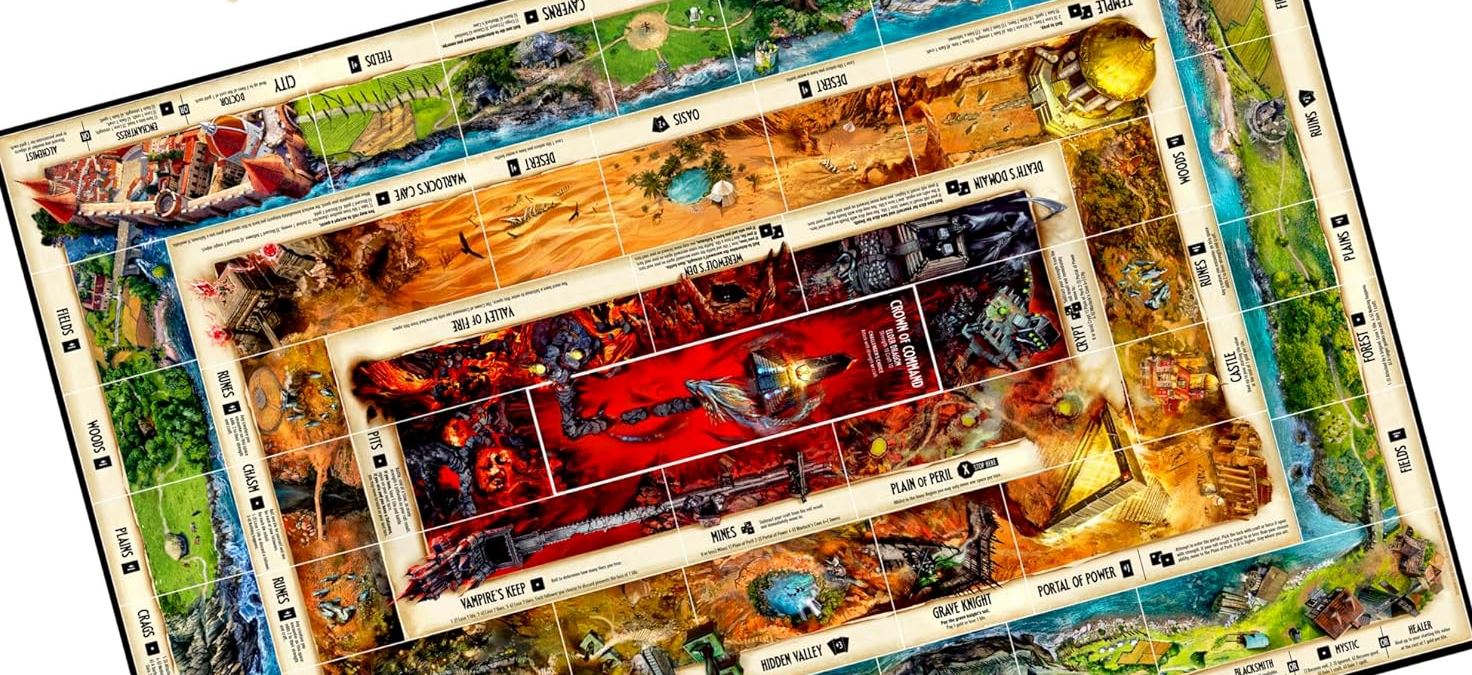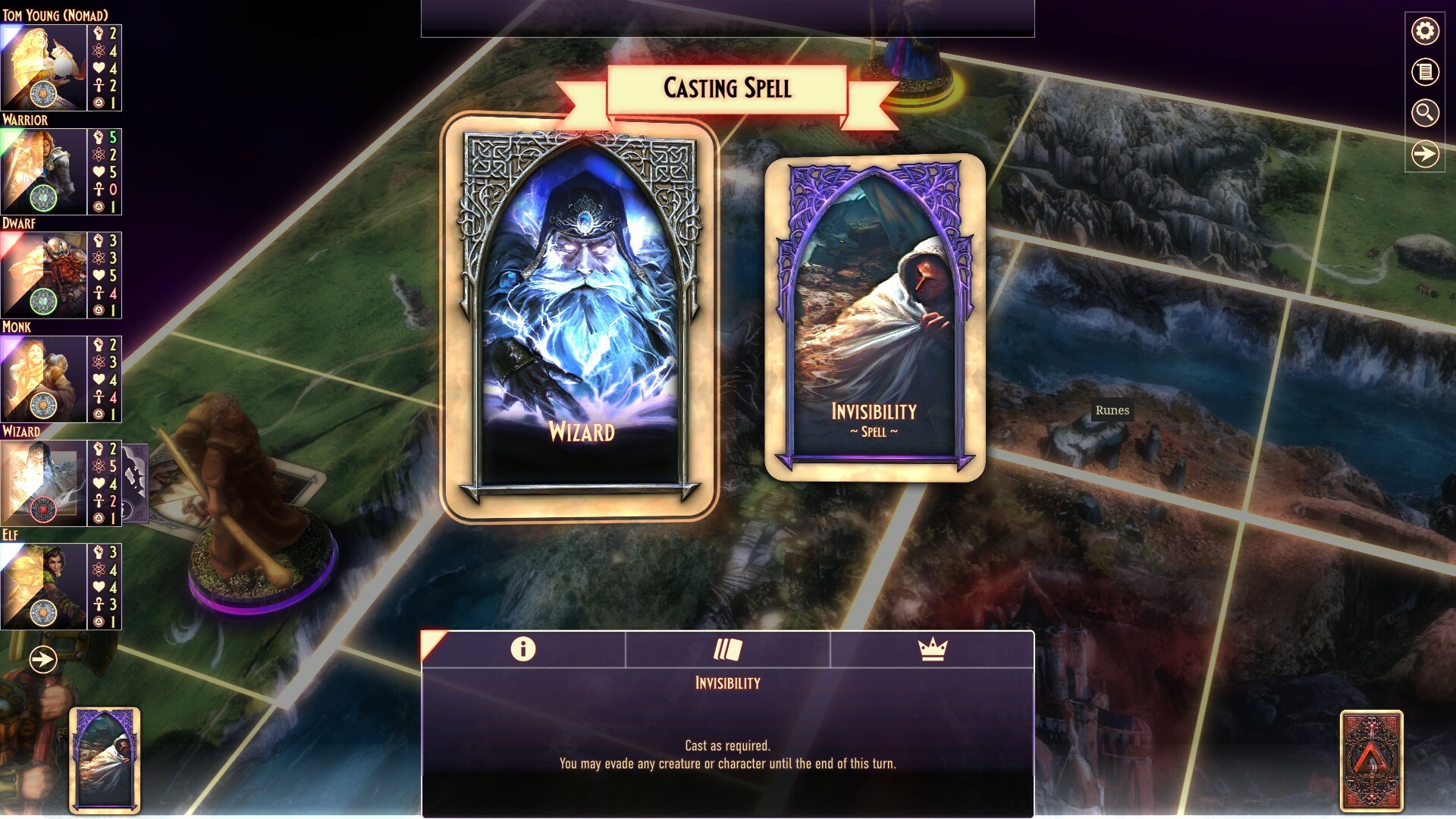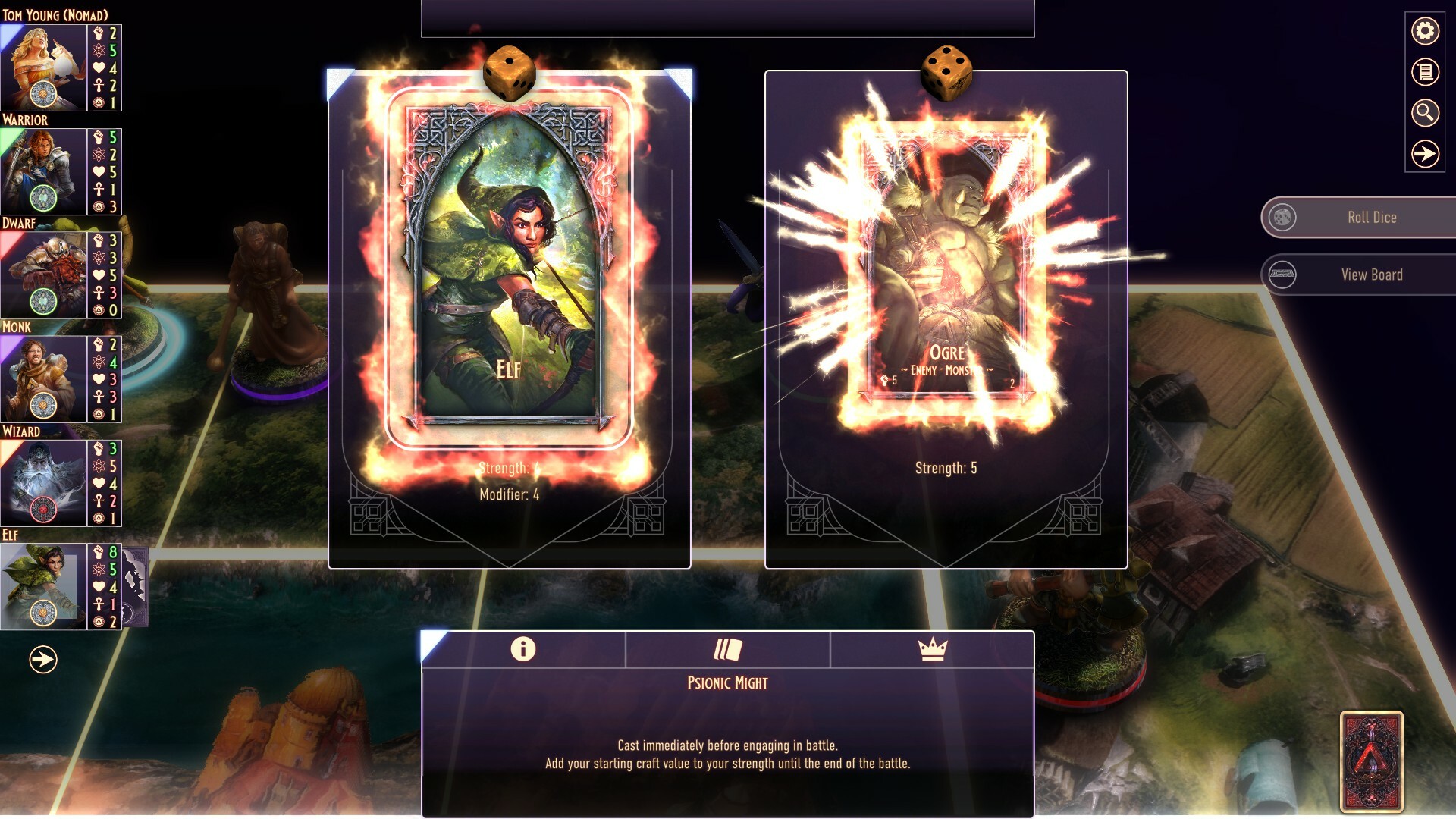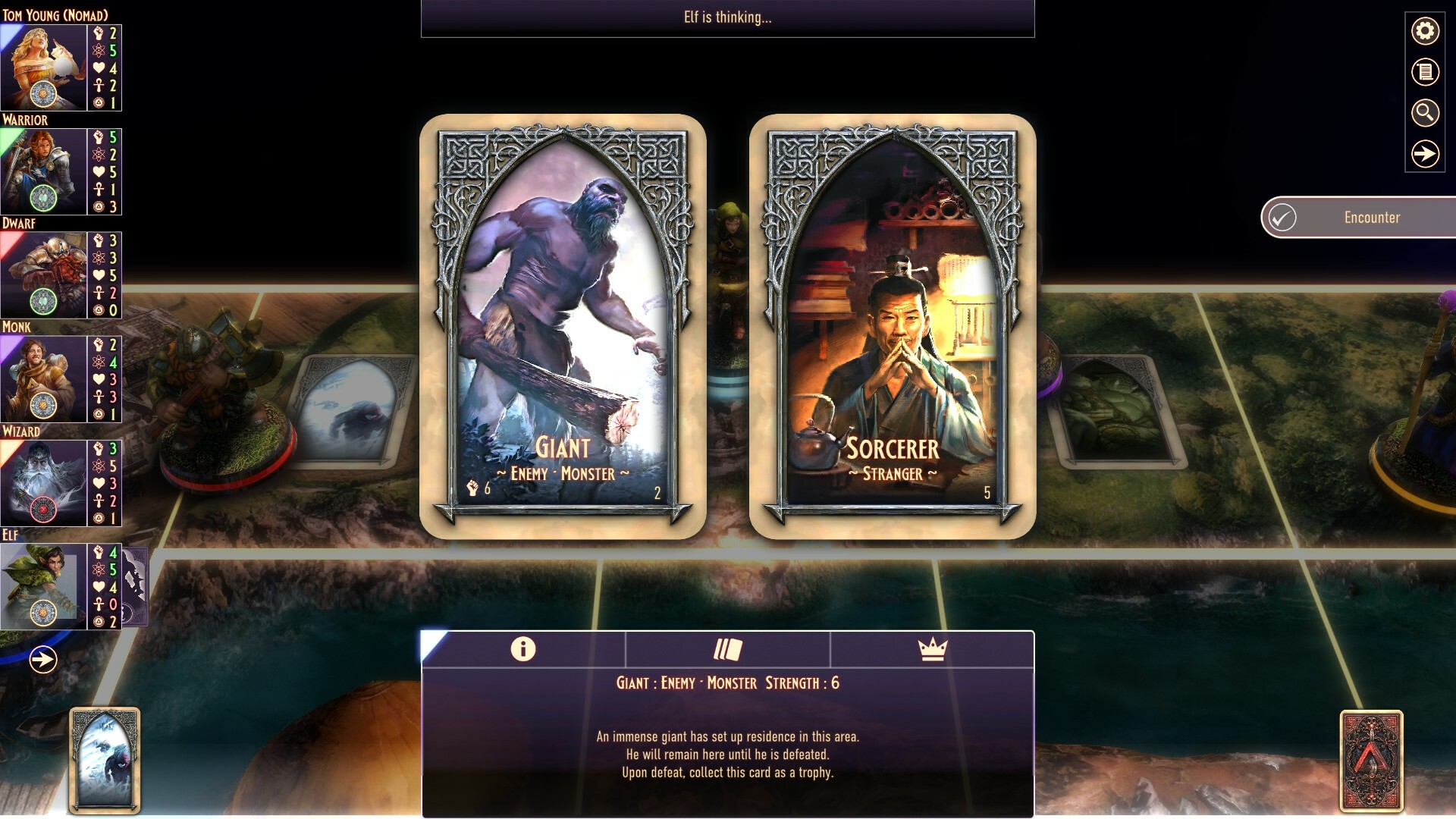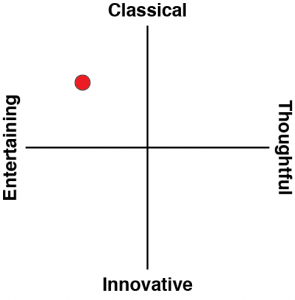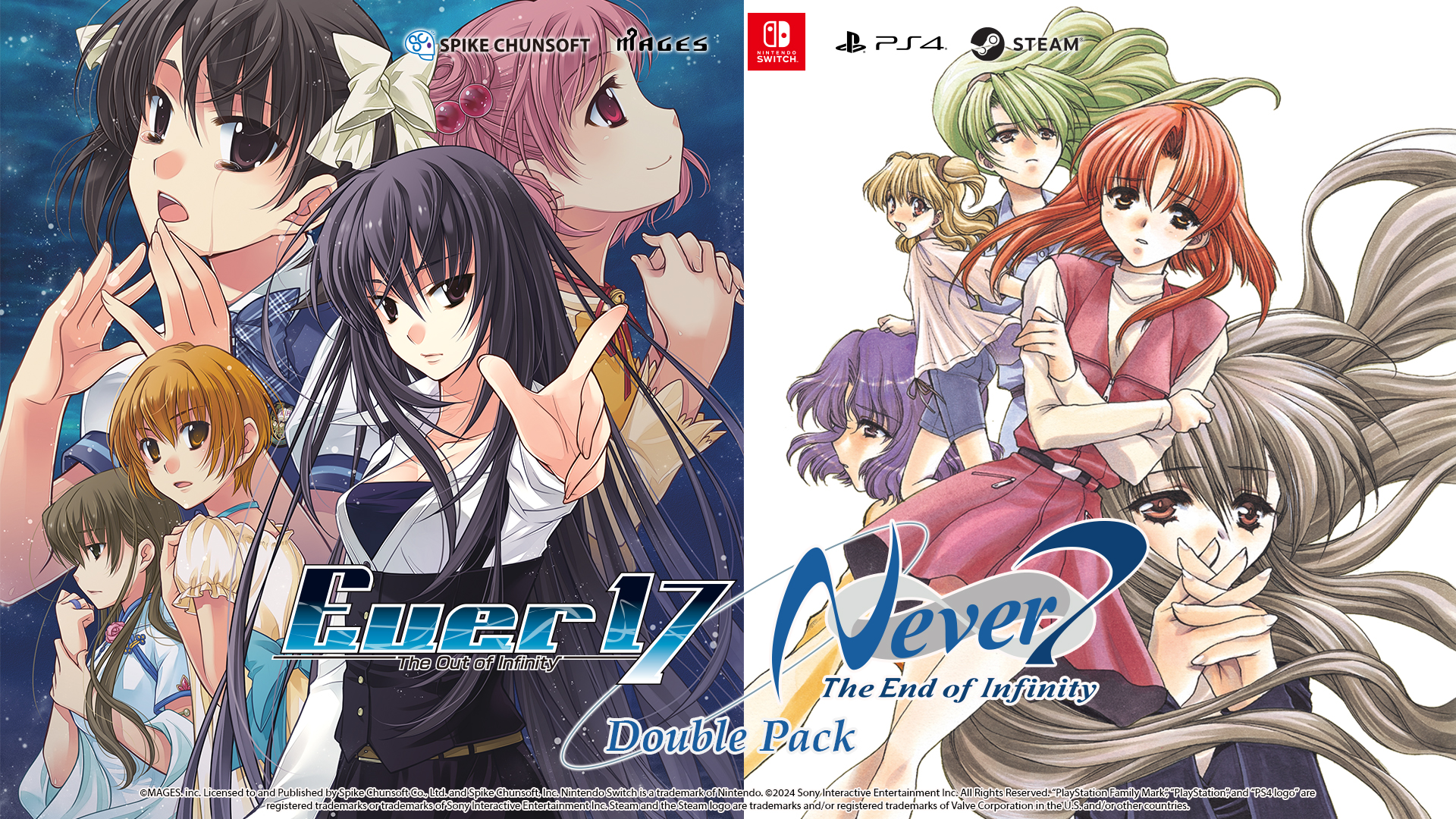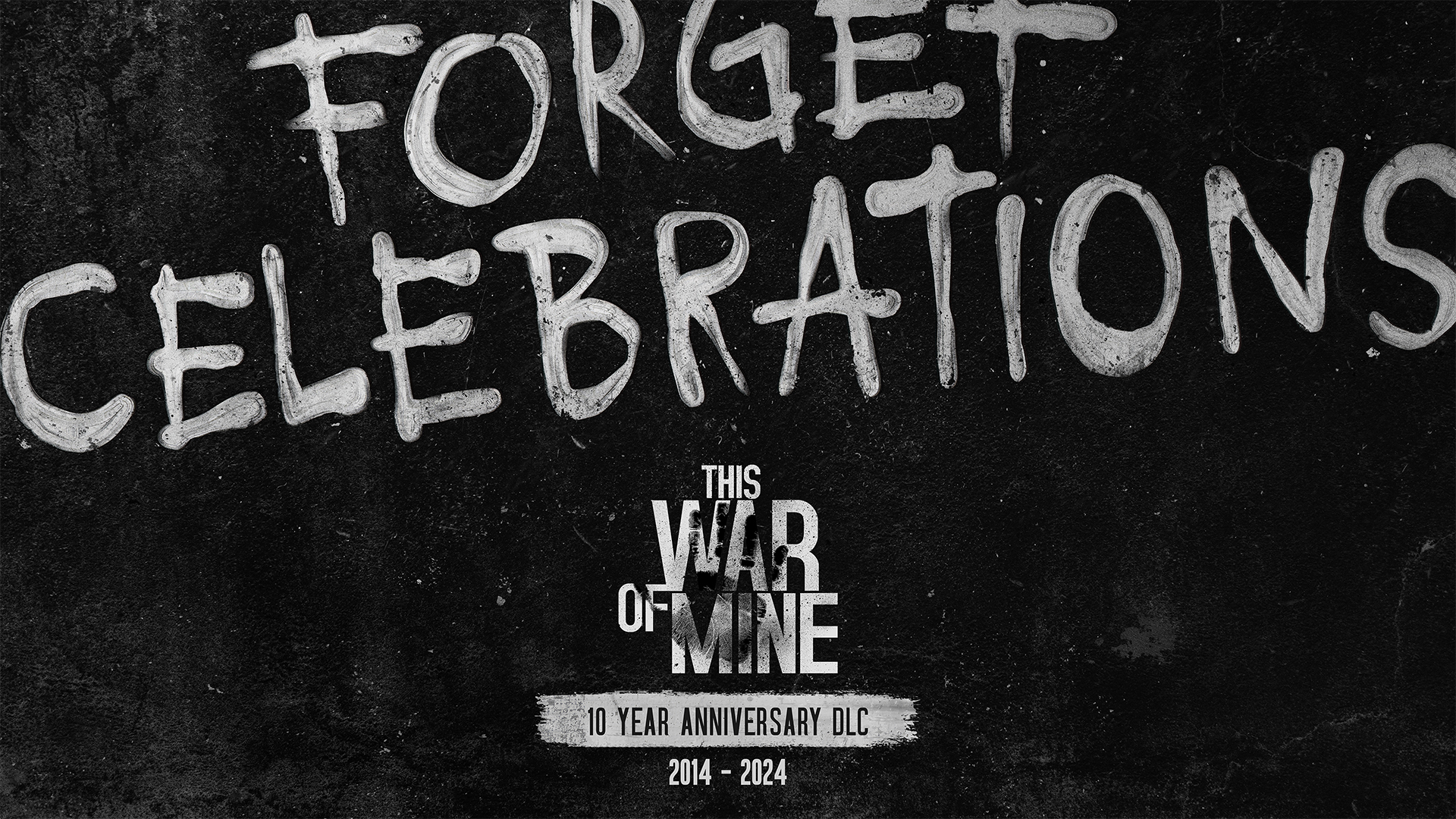Talisman is one of those iconic, classic board games that has been doing the rounds for many years now. The original Talisman is 41 years old now, having been released way back in 1983! That makes it somewhat more contemporary than Monopoly, Risk, and Cluedo, but puts it in the same general area as the original Dungeons & Dragons and the original release of Hero Quest, marking a time when fantasy board games were dominating tabletops. Board games have moved on since 1983, and most would say for the better. Talisman has tried to keep up, with the 5th Edition being released in July of this year. And now we have the digital version of that.
Talisman: Digital 5th Edition is being handled by Nomad Games, who have plenty of experience with the board game, having handled the digital edition of the previous version of the board game.
Thankfully, there have been some significant efforts to make this new edition a more visually engaging take than its predecessor. There’s some good use of animation, dynamic camera angles, and detail in the art this time around, making the thing feel more dynamic and capturing the sense of adventure and danger better. It does come with some slight compromises to the interface, and it took me a game or two to stop making mistakes by pressing the wrong thing, but once I was comfortable with that I had no issue with making my way around and trying to strategise my way to victory.
For those who have never played Talisman before, it’s a relatively simple game: The board is made up of three “rings”, and all characters start on the outer ring. Your goal is to wander around that outer ring for a while, accumulating power via loot and combat experience by running into enemies. After a while, you’ll feel sufficiently strong to take a crack at moving into the second ring, where the enemies and threats are greater and there are fewer safe zones. When you’re ready to really throw caution to the wind you can try and enter the inner layer (assuming you’ve collected the Talisman on your journeys first). From there you’ll start draining life away from the other players, and the game ends when either they are all dead or successfully challenge you.
It’s a perfectly decent pulp fantasy concept, and a lot of the game is executed well, from its variety of enemies, to generally high difficulty, to the fact that there are a wealth of characters to choose between, each with significantly different abilities, giving you plenty of tactical options based on how you prefer to play.
The game has a problem, though. It’s not a problem that’s Nomad’s fault but the developer hasn’t perhaps done enough about it either: Talisman is almost entirely dice and luck-driven, and dice-driven games can be absolutely miserable experiences if you’re on the receiving end of bad luck. Just like with Monopoly, Risk, Snakes & Ladders, Ludo, and just about any other game where success is largely predetermined based on the series of dice rolls the universe is about to throw at players, Talisman will quickly feel like a foregone conclusion to at least some of the players. There’s very little that can be done to turn things around if you start to fall behind because the turnaround relies on a good set of dice rolls. Your agency to do something to stage a comeback is very limited.
With that in mind, we come to the digital adaptation of Talisman 5th Edition. My gut tells me that Nomad isn’t cooking the numbers and every time you throw the dice down you know you’ve got a one-in-six chance of getting any of the numbers from 1-6 face up. And yet it’s a weird quirk of psychology that even as you tell yourself that, you’re going to get furious when you roll three ones in a row, each time sending you into a horrible monster or trap, while one of the AI manages to get three awesome pieces of loot and leap far ahead of you. It’s going to feel like the AI is “cheating.”
I would imagine that for most people you’re not going to get to the end of a Talisman game. Not against the AI, at any rate. Once you start falling behind, the temptation to simply quit is going to increase with every turn until it wins you over. When you’re the one ahead then you’ll keep playing, of course, but statistically speaking that’s only going to occur one in every four or so games you play (assuming you play against three AI opponents). You might be more inclined to play nice and hang around when playing online against friends, but get ready for the last half of the game to be pure drudgery if you’re still trying to gain power on the outer ring and your opponents have already graduated to the end game. You’re going to mentally check out, and this is a far cry to modern board games like Wingspan, where you feel like you’re a participant right up to the last card.
However, while it’s not Nomad’s fault that Talisman relies so heavily on dice roles, it could have done something to subtly tweak things away from the potential for endless bad luck. I can’t even remember who told me this now, it was many years ago, but there’s this idea that “randomness” in video games should be something of an illusion. Not massively or blatantly weighted, but just enough that the frustration from long sequences of bad rolls doesn’t build up.
As I said in my review of the previous edition, Talisman is really just a glorified game of Snakes and Ladders when it comes to players having the agency to determine the winner. They simply don’t. There’s a lot to like about the presentation and theming of the board game, and unlike its previous Talisman project, Nomad’s done a sparkling job with the presentation and aesthetics of this one. For that reason, it is the definitive version of Talisman out there, but there are just so many board games that were released in the past decade that have ruled Talisman obsolete from a game design perspective, and so many of those have a digital edition too.
